Some call it Yellow Rosemallow.
Others refer to it as Lemon Yellow Rosemallow.
I usually call it Rosemallow.
The proper botanical name is Hibiscus calyphyllus. Whatever you want to call this beautiful warm-season bloomer, you should welcome it to the palette of your garden choices, planted either in the ground or in a container.
Here in Austin, Texas, zone 8b, it grows and blooms from late spring, throughout summer and into the fall. Rosemallow dies to the ground during a hard freeze, but returns from its roots in spring as long as it’s well-mulched.
This plant is not native to North America. It hails from Central to South Africa, but has naturalized in many places in the world. I became familiar with Lemon Rosemallow when I was working at the Green Garden at Zilker Botanical Gardens (ZBG). I was researching out-of-the-ordinary, hardy, non-invasive shade bloomers that weren’t already in abundance at the Gardens. I purchased plants for the Green Garden at the excellent, locally owned Barton Springs Nursery (BSN) and one of BSN’s knowledgeable employees suggested I try Lemon Rosemallow. The employee showed me a BSN Rosemallow specimen planted under a large shade tree.
The Rosemallow was full of blooms and I was smitten.
A full, but loose and airy shrub, it sports large tropical-looking leaves and showcases large hibiscus-like flowers.
What’s not to love about that?
For reasons I no longer remember, I never bought one for the Green Garden. But I eventually purchased one for myself. I planted it in a relatively new extension of an established bed. It’s been three or four years since I planted the Rosemallow and my adoration of this lovely, long-blooming perennial continues.
From April to November, this perennial hosts blooms almost everyday. Large lemon-yellow petals with a deep burgundy middle.
The flowers open slowly in the morning.
The peak of the blooms occurs mid-day.
The blooms close in late afternoon.
Three to four flowers open most days during Rosemallow’s long growing season; I usually snip off spent blooms to promote continual flower development. In my garden, the Rosemallow receives morning to mid-afternoon sun in the summer and a bit less than that during the fall. My Rosemallow is not planted in shade, though I consider it in a part-shade situation. For its first years it remained evergreen during winters. This past winter, which was a colder than recent ones, the perennial froze to the ground.
In spring it returned from its roots, fuller than ever.
While researching this plant for use in Central Texas, couldn’t find any definitive information about Rosemallow’s deer resistance. Other commonly utilized Malvaceae/mallow plants in Central Texas are considered moderately deer resistant.
At most, Rosemallow only needs average irrigation–maybe a thorough soaking twice-per-month for typical (not rocky) soil. During the record hot and dry summer of 2011, my Rosemallow was a champion bloomer and with minimal watering. This is an easy, no-fuss perennial.
I haven’t noticed any disease or insect problems with this plant, though my blooms often host some ants. They ants don’t negatively affect the blooms or foliage and I don’t think the ants are eating aphids. Maybe they just like hanging out on pretty flowers?
I’ve observed butterflies and moths at the blooms, though in my gardens, Rosemallow isn’t a strong attractor of pollinators.
Really, it’s just for me.
Since the Rosemallow is in the Malvaceae (mallow) family, I thought it would be fun to plant it alongside its kin, an established Turk’s Cap.
You can see from this photo, that the leaves of the two plants are almost identical, except that the Turk’s Cap leaves are larger and have something munching on them. Drat!
At a quick glance, it looks like the Turk’s Cap has big, yellow blooms.
Because Rosemallow can disappear in winter, I planted mine with evergreens as companions: Soft-leaf Yucca, Yucca recurvifolia, Pink Skullcap, Scutellaria suffrutescens, Iris, Thyme and Fall Aster, Symphyotrichum oblongifolium. Given Rosemallow’s loosey-goosy growing habit, it’s a good idea to plant it with at least some architectural plants–yucca, grasses and the like.
Try this hardy and beautiful hibiscus in your garden.
Then sit back and enjoy its beauty.
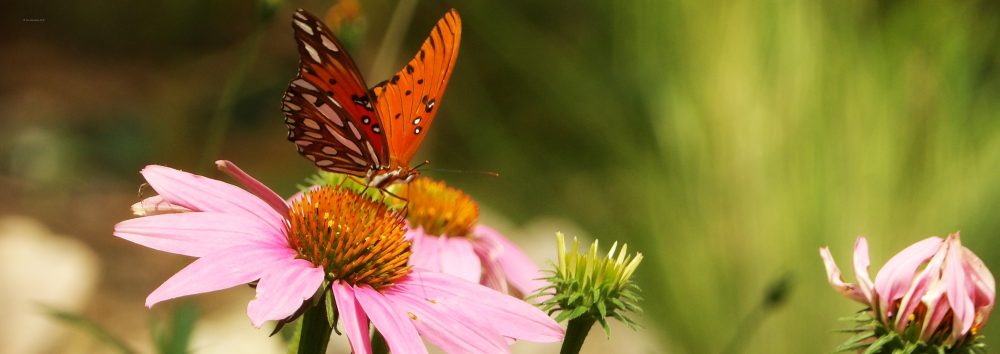
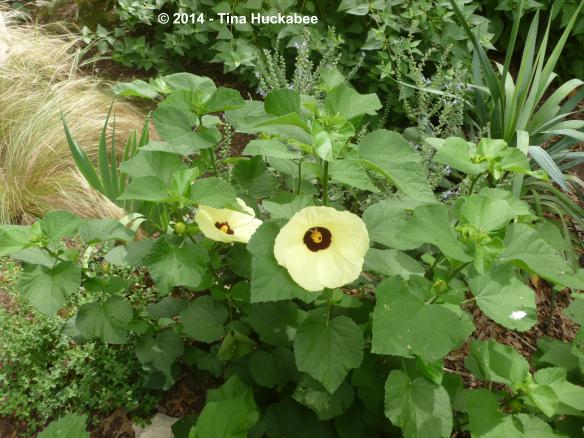
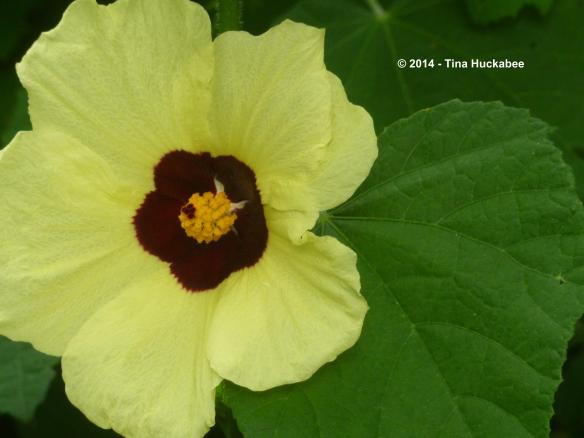
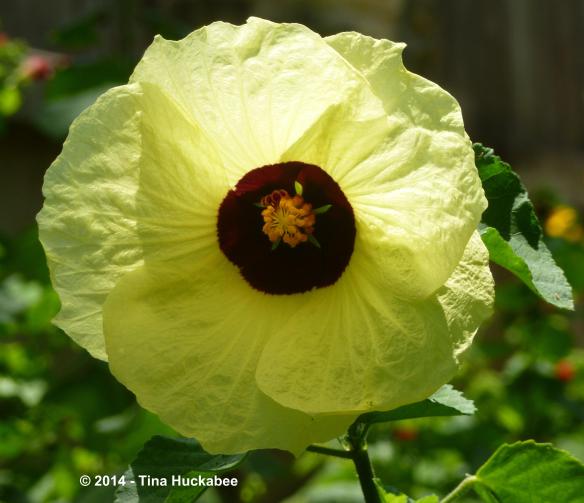
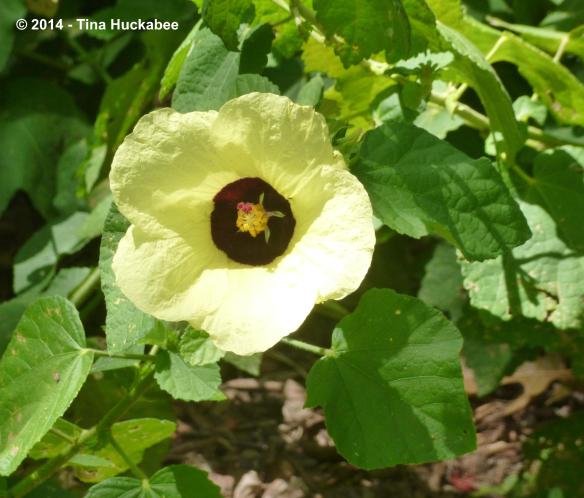
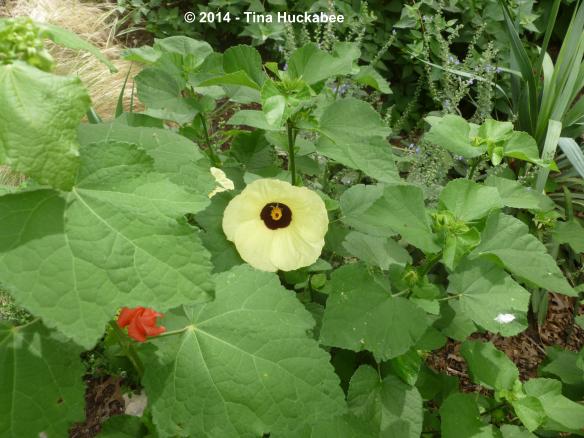
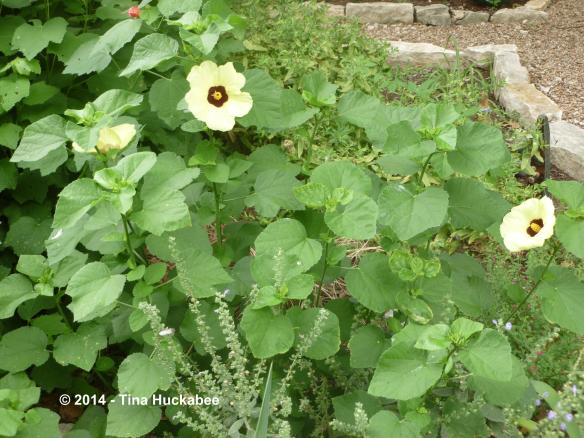
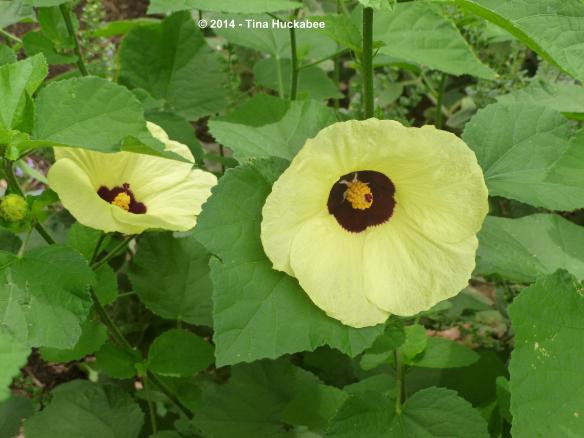
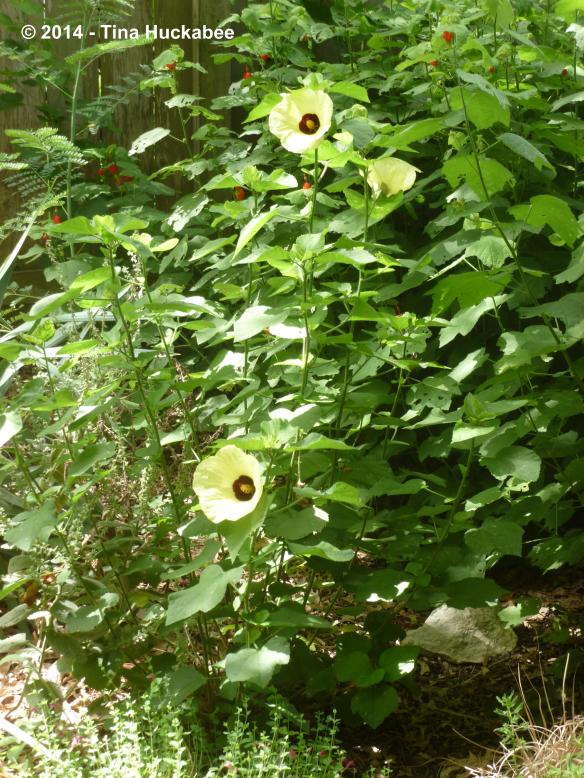
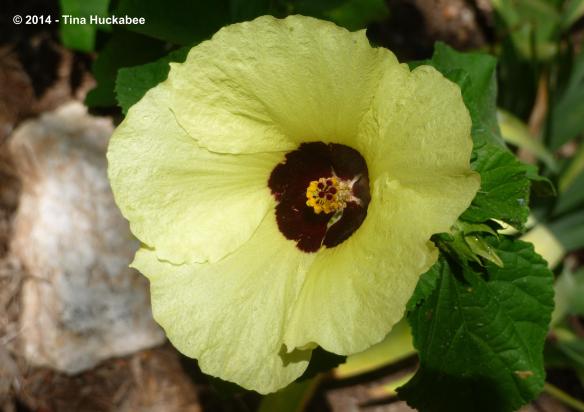

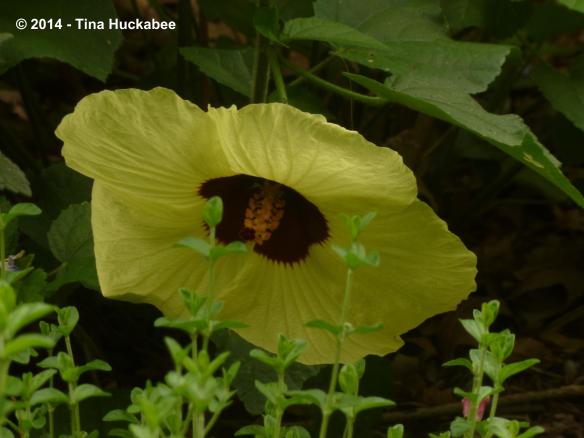
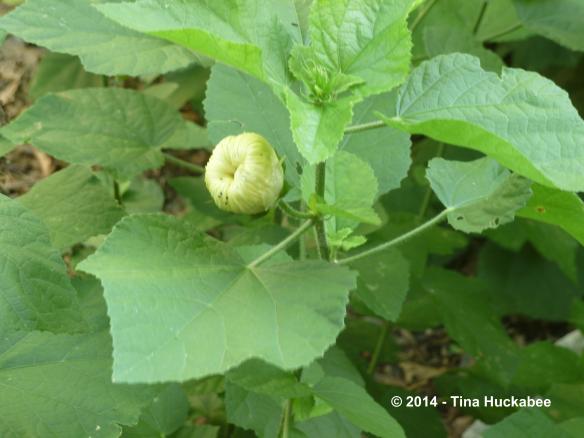
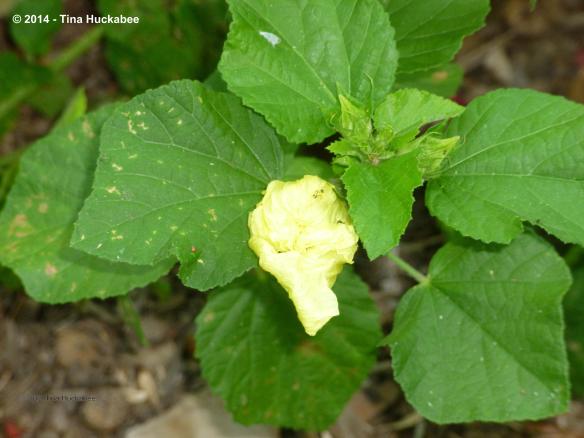
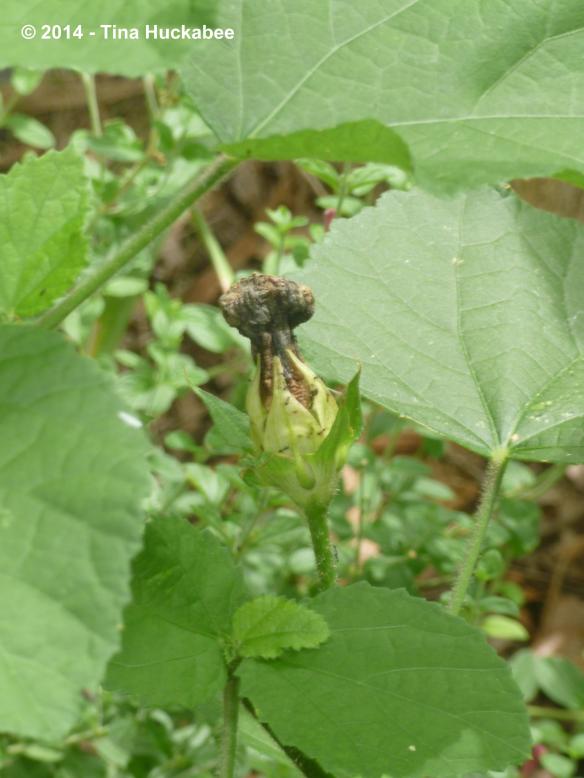
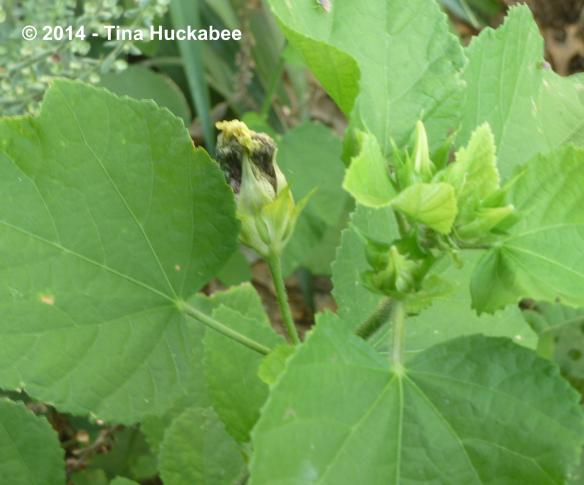
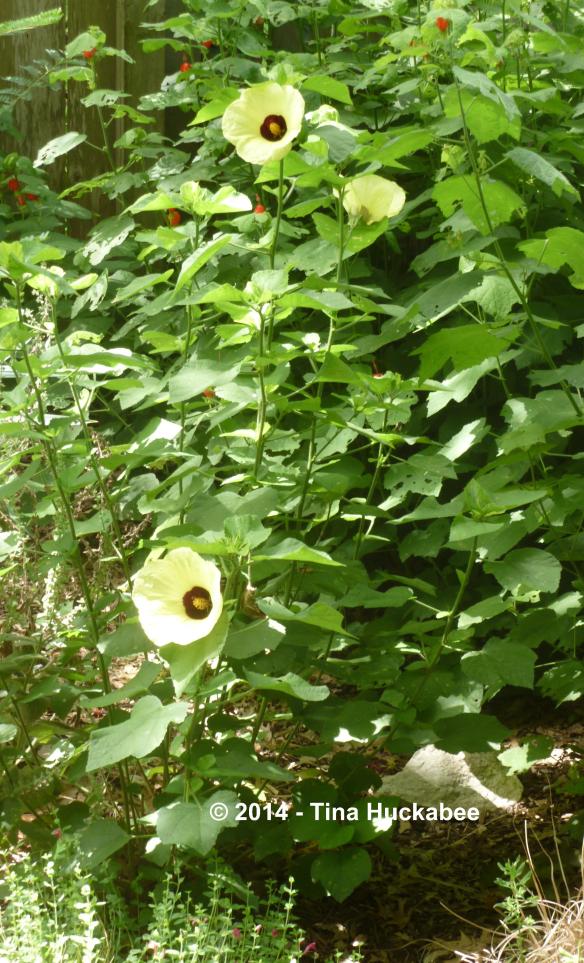
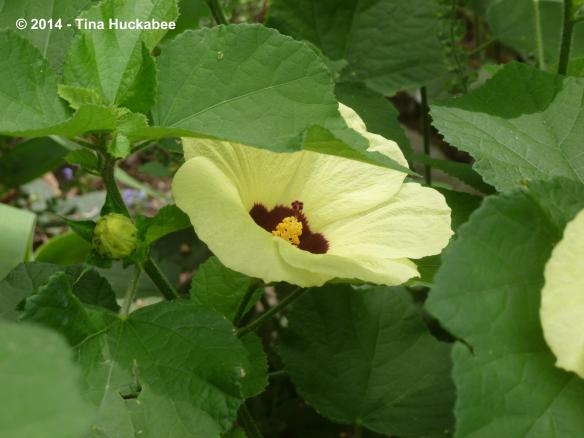
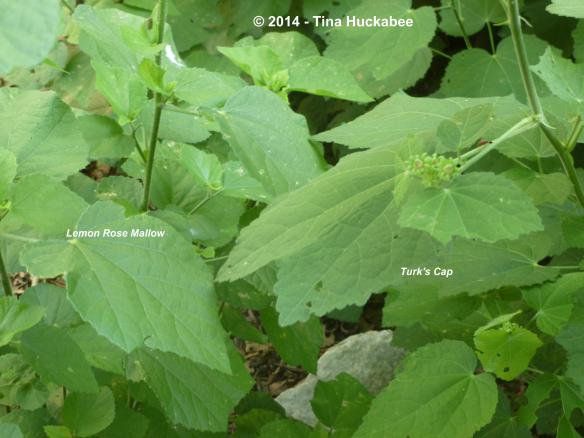

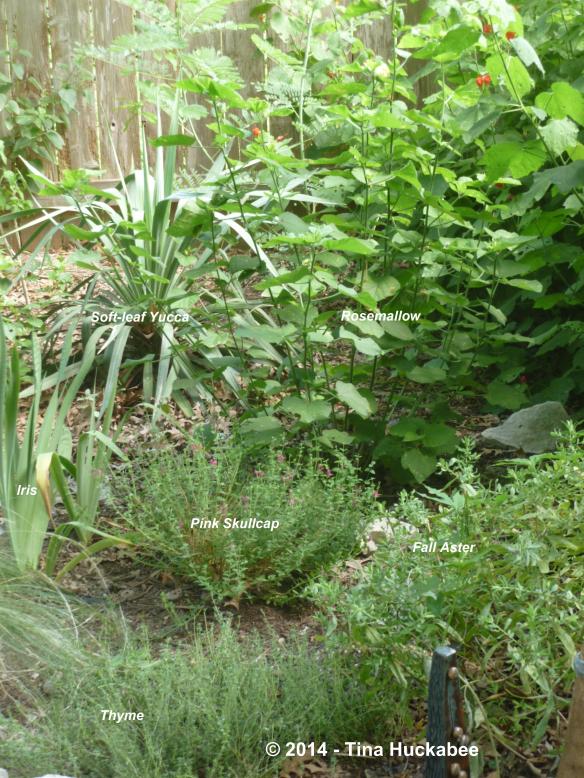
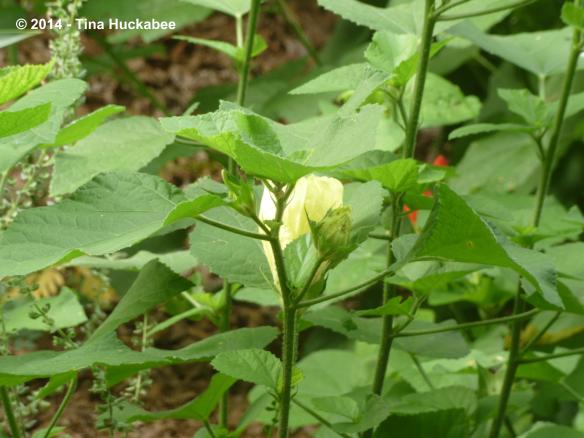
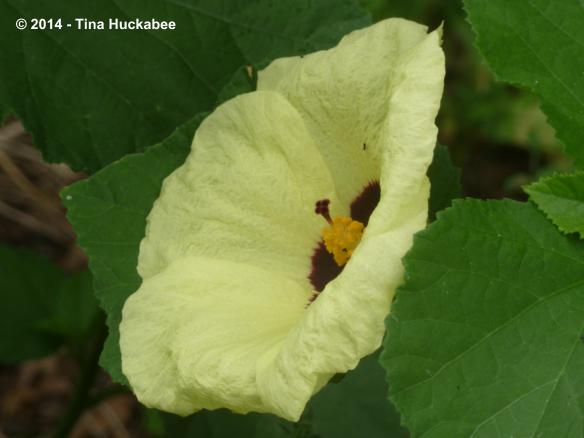
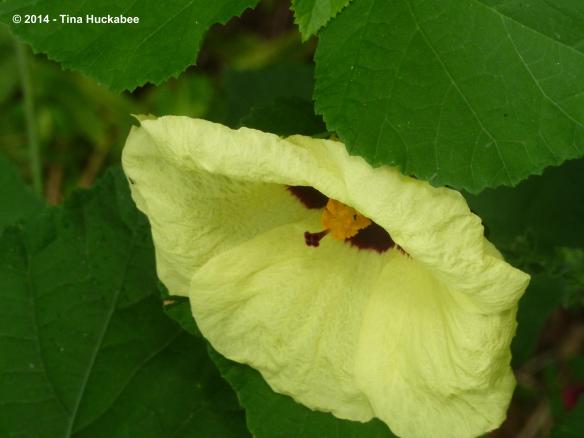
Oh me oh my. I am a total sucker for the mallows in general and the color on this specific one is sublime. I can see why you’re smitten. After reading this post I actually went out and surveyed my domain for a suitable opening. Unfortunately the only spots are out where the deer roam and munch freely and I’m not sure I could handle losing such a gorgeous plant to Bambi and company. Maybe I’ll be able to convince BSN to give me a plant for free in return for “researching” the deer tolerance?
LikeLike
It’s always worth a try with BSN–you could become BSN’s independent deer contractor! Actually, you could call them (why didn’t I think of that?) and ask what their experience is. The Lemon Rosemallow is so pretty. I don’t have many perennials with large blooms–roses, mostly, so I welcome something that can bloom in part sun/part shade. That’s one reason I’m so excited to have a Rose of Sharon–it’ll be another larger-than-normal bloom for my gardens.
LikeLike
You are the best. I love how you describe how to position a plant in the landscape. I love the soft yellow of the flowers. I have been moving towards including more yellows lately it seems. I think it is a great colour to brighten up dark areas.
LikeLike
I’m blushing!! Gee, thanks Debra. I’ve made many, many mistakes in my gardening and placement of plants, so, yeah, I hope to save other folks some time. 🙂 Yellow is sooo–cheery. It’s a must have in a Texas garden!
LikeLike
Sadly there are too many blogs out there that are not much more than adverts or bragging pieces. My favourite gardening blogs are the ones that help me connect with someone’s experience or that can help me be a better gardener. I think yours does both of those things. It is always a delight to visit. =)
LikeLike
Awe, thanks so much, Debra. Like you, I love the blogs that teach me something–you’re correct, many don’t. “Taste” in style is so individual, but suggestions of which plants to use in our climate and soil and how/where to place those plants by someone who’s done it? That can be so useful.
LikeLike
This is a sweet plant. I have one in the front garden and have really enjoyed it thus far. I lost one to winter but it wasn’t heavily mulched and it was in the path of the north wind. I’ll be sure to protect the roots of this one. I did notice that the grasshoppers were enjoying the leaves a few weeks ago but after some judicial harvesting of grasshoppers the plant seems to have outgrown them now that their numbers are reduced. I haven’t been removing the spent blooms either; I’ll start doing that to encourage more. Thanks for the tips!
LikeLike
Hi Cat! It is a sweet plant. I wish I had room for more, but I need to wait for something to croak before that happens! Interesting that you’re having grasshopper issues with the leaves. I have holes on other plants, but not the Rosemallow. I don’t always remove the blooms, but the rewards when I do? Definitely worth it!
LikeLike
Pingback: Lovely Lavender | My Gardener Says…
Pingback: Feeling Spring | My Gardener Says…
Pingback: Flowers Before the Freeze | My Gardener Says…